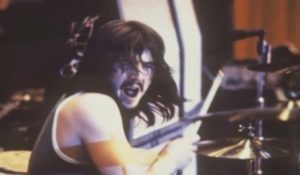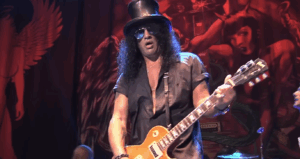10 Beatles Songs That Are Almost Ignored

via @_with_the_beatles_ | Instagram
Not every Beatles song gets its due. With such an iconic catalog, the spotlight naturally gravitates toward the mega-hits—those tracks that shaped generations and still dominate playlists today. But beneath the chart-toppers and cultural touchstones lies a rich layer of deep cuts and lesser-known gems, each one offering a fresh glimpse into the band’s creative evolution.
Some of these songs never had a moment in the sun. Others were released as B-sides or tucked between more celebrated tracks, quietly overshadowed despite their craftsmanship. Whether it’s a haunting melody, a clever lyric, or an unexpected sonic twist, these songs show that the Beatles’ brilliance wasn’t limited to their greatest hits.
This list takes a closer look at ten Beatles tracks that have gone largely underappreciated. They might not make every highlight reel, but each one is worth a listen—and maybe even a second or third.
View this post on Instagram
10. “She’s Leaving Home”, Sgt. Pepper’s Lonely Hearts Club Band (1967)
This orchestral ballad often gets lost in the kaleidoscopic swirl of Sgt. Pepper, overshadowed by more experimental tracks like “A Day in the Life” and “Lucy in the Sky with Diamonds.” But “She’s Leaving Home” is one of the album’s most emotionally grounded moments, telling a quiet story of a girl who runs away from home in search of freedom. Paul McCartney delivers the narrative with poignant simplicity, while John Lennon provides the parents’ melancholic perspective.
The arrangement stands out in The Beatles’ catalog. With a lush string section arranged by Mike Leander (not George Martin, unusually), the song doesn’t feature any traditional Beatles instruments. That absence only reinforces the feeling of detachment and longing at the heart of the lyrics. It’s classical in tone and tragic in content—a combination that resonated with many but failed to catch fire like other tracks from the album.
Despite being part of one of the most acclaimed records of all time, “She’s Leaving Home” is rarely mentioned when fans talk about the band’s defining moments. Maybe it’s the absence of a backbeat or its deeply British sense of decorum, but this song deserves a louder echo in Beatles conversations. Its storytelling and arrangement remain quietly powerful even decades later.
9. “Hey Bulldog”, Yellow Submarine (1969)
“Hey Bulldog” never got the push it deserved. Originally recorded during the Magical Mystery Tour era, it found a home on Yellow Submarine, a soundtrack album that itself wasn’t taken too seriously upon release. Buried among recycled tracks and orchestral pieces, this rocker feels almost hidden—yet it showcases one of the band’s tightest, most playful performances.
Driven by a funky piano riff and a snarling vocal shared by Lennon and McCartney, the track walks a line between blues and proto-hard rock. The lyrics are cryptic but charged with energy, and George Harrison’s distorted guitar fills give the song an extra edge. It’s one of those Beatles songs where you can hear them having fun in the studio—complete with barking dog sound effects and spontaneous laughter.
Only in recent years has “Hey Bulldog” begun to get more recognition, especially after it was restored to the 1999 re-release of the Yellow Submarine film. Even so, it still doesn’t get nearly the attention it merits. For fans looking to explore the Beatles’ heavier side, this track remains an underappreciated standout.
8. “And I Love Her”, A Hard Day’s Night (1964)
While “And I Love Her” was released as a single in some countries and did well on the charts, it has somehow faded from the list of Beatles songs that are constantly celebrated. Overshadowed by louder and faster hits from the early Beatles era, this gentle ballad highlights McCartney’s emerging knack for emotional vulnerability in songwriting.
Built on a simple yet elegant melody and featuring a distinctive acoustic guitar solo from George Harrison, the song marked a shift in tone for the band. It was one of their first to move away from the standard boy-meets-girl narrative into something more nuanced. The descending chord progression and subtle percussion underscore the quiet intensity of McCartney’s vocal performance.
Though it was a turning point in the Beatles’ balladry, “And I Love Her” doesn’t usually show up in retrospectives or radio countdowns. Still, its influence can be traced forward through decades of singer-songwriter fare. This is a song that rewards repeated listens—not with bombast, but with sincerity.
7. “Dear Prudence”, The Beatles (White Album) (1968)
Written during the Beatles’ retreat in India, “Dear Prudence” was inspired by Mia Farrow’s sister Prudence, who had taken a deep dive into meditation. Lennon turned that moment into a hypnotic plea to re-engage with the world, and the resulting track is one of the White Album’s most atmospheric pieces.
It starts quietly, almost whispering its way in, before building layer upon layer of guitar, bass, and harmony. The arrangement reflects the message of the lyrics—gently coaxing someone back to life. Ringo Starr was absent during this recording, so McCartney took over on drums, delivering one of the tightest grooves on the album.
Despite its craftsmanship and emotional warmth, “Dear Prudence” is often skipped over in discussions of the band’s best late-period work. It didn’t chart, wasn’t a single, and lacks the notoriety of other White Album entries, but it remains a fan favorite for those who dig deeper than the surface of Beatles history.
6. “Oh! Darling”, Abbey Road (1969)
This track could have easily been mistaken for an old-school soul single if it weren’t buried midway through Abbey Road. McCartney’s vocal on “Oh! Darling” is among the most impassioned performances of his career—raspy, pleading, and full of urgency. It was his attempt to sound like he’d been performing it nightly in clubs for weeks.
The band took several tries to capture the right take. McCartney famously came into the studio early for days to warm up his voice, wanting to nail that raw, heartbroken sound without artificial roughness. The result is a slow-burning, retro-tinged song that feels both theatrical and deeply personal.
Even on a masterpiece like Abbey Road, “Oh! Darling” often gets sidelined in favor of the album’s iconic side-two medley or singles like “Come Together.” But it’s one of the clearest links between The Beatles and the roots of rock and soul, and it remains a showcase of McCartney’s vocal versatility.
5. “We Can Work It Out”, Single / Past Masters (1965)
Despite being a number-one single, “We Can Work It Out” is rarely grouped with The Beatles’ core list of timeless anthems. Released as a double A-side with “Day Tripper,” it often gets eclipsed by its counterpart or by later, more complex Lennon-McCartney compositions. Yet it stands as an early example of the duo’s creative tension producing something both accessible and layered.
McCartney’s verses push for optimism and resolution, while Lennon’s middle eight (“Life is very short…”) injects a dose of cynicism. That dynamic—musical and philosophical—gives the song more depth than its singalong surface might suggest. The use of harmonium and a subtly shifting time signature adds to its uniqueness, giving the track a folk-rock lilt uncommon in mainstream pop at the time.
Over the years, “We Can Work It Out” has quietly slipped into the background of the Beatles’ story, rarely spotlighted in retrospectives or tribute albums. But for those who revisit it, the song still strikes a chord—offering a snapshot of the Lennon-McCartney partnership at a pivotal moment in their artistic evolution.
4. “If I Fell”, A Hard Day’s Night (1964)
“If I Fell” often gets lost among the more exuberant tracks of the early Beatles era, but it’s one of the band’s first forays into emotionally nuanced songwriting. Written primarily by Lennon, the song expresses a sense of hesitation and vulnerability that was rare in pop music at the time, especially coming from male artists.
The vocal harmonies between Lennon and McCartney are meticulously constructed, showcasing their musical chemistry at a high level. The shift from the song’s uncertain intro into its delicate main melody is striking, and the lyrics speak to a more complicated emotional state than the typical “I love you” sentiments of their early work.
Although it appeared in A Hard Day’s Night and had some chart presence in the U.S., “If I Fell” doesn’t get nearly the same reverence as other early ballads like “This Boy” or “Yesterday.” Still, it remains a quietly important track—proof that even in their early twenties, the Beatles were already pushing against the limits of what pop songwriting could express.
3. “For No One”, Revolver (1966)
Tucked away in the second half of Revolver, “For No One” is one of Paul McCartney’s most devastating compositions. It’s a break-up song without any of the usual drama—just quiet resignation and piercing observation. The lyrics are emotionally stark, telling the story of a relationship’s end with minimal sentimentality.
The arrangement is equally restrained. Built around McCartney’s clavichord and a delicate French horn solo, the song barely breaks a whisper, but it’s emotionally weighty. Ringo Starr is absent, and the track feels more like chamber pop than rock, setting it apart not only from the rest of the album but also from most of the Beatles’ work.
Despite its emotional depth and compositional sophistication, “For No One” remains under the radar, often overshadowed by Revolver’s more experimental songs like “Tomorrow Never Knows” or “Eleanor Rigby.” Yet for those who discover it, it often becomes a quiet favorite—a reminder of the band’s skill in subtlety and storytelling.
2. “I’m Looking Through You”, Rubber Soul (1965)
On an album often praised for its maturity and cohesion, “I’m Looking Through You” is one of the lesser-celebrated tracks—despite capturing the emotional shift that defined Rubber Soul. McCartney’s lyrics reflect disillusionment and change, possibly aimed at his then-girlfriend Jane Asher. It’s one of his more personal songs, delivered without heavy-handedness.
The song’s folk-rock sound fits right in with the mid-’60s musical landscape, with acoustic guitars and hand percussion anchoring the arrangement. A quirky false start and slight instrumental inconsistencies only add to its charm—it’s a bit rough around the edges, but that fits the theme of seeing someone in a new, uncomfortable light.
“I’m Looking Through You” rarely appears in Beatles rankings or retrospectives, but its place on Rubber Soul marks it as a turning point in McCartney’s songwriting. It’s introspective without being sappy, musically solid, and lyrically sharp—proof that even their “album tracks” could outshine the singles of other bands.
1. “I’ve Just Seen a Face”, Help! (1965)
“I’ve Just Seen a Face” is one of those songs that seems tailor-made for a different genre. Its brisk tempo and bright acoustic guitar picking give it a country-folk feel, making it a favorite for bluegrass covers and live reinterpretations. Yet, for all its charm and energy, it’s rarely mentioned in the same breath as The Beatles’ more famous love songs.
The song was a late addition to Help! in the UK but opened the Rubber Soul album in the U.S., helping define that record’s more acoustic, rootsy vibe for American listeners. McCartney’s lyrics are breathless and spontaneous, matching the urgency of love-at-first-sight. It’s upbeat and catchy but never cloying.
Despite its versatility and influence, “I’ve Just Seen a Face” is often treated as a minor entry in the Beatles’ discography. It doesn’t get the radio play or retrospective analysis that other songs enjoy, but it remains one of their most engaging and agile performances—a hidden highlight for those who go beyond the obvious hits.





















